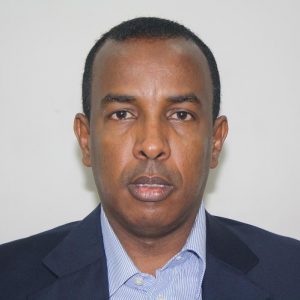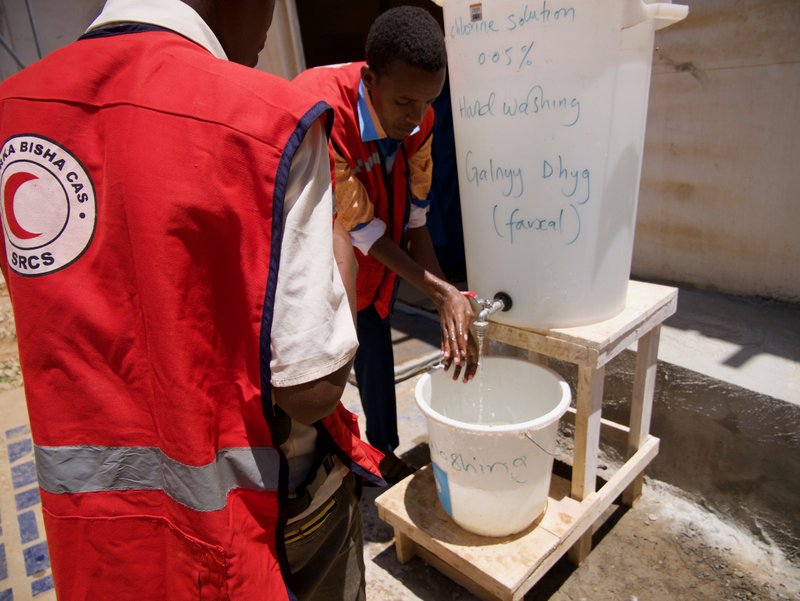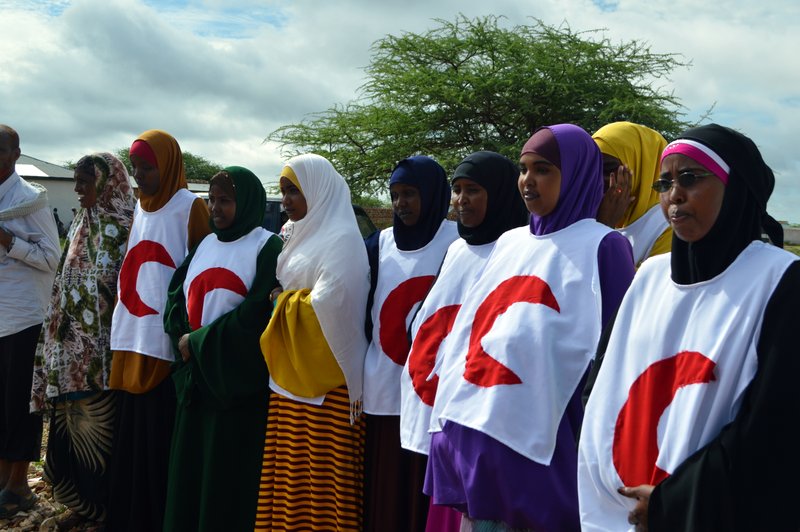The Somali Red Crescent Society (SRCS) has endured in Somalia despite the country’s tumultuous history crisis. In the 1990s, when civil war broke out, disrupting public health services, the SRCS had no choice but to substitute the absence of health authorities after the collapse of the Siad Barre regime. Today it is the largest Somali humanitarian organization in the country thanks to its vast network of volunteers.
The organization is now undergoing changes driven by a new leadership headed by SRCS President Yusuf Hassan Mohammed, who has been at the helm since November 2015 and now faces one of the country’s worst droughts in years. More than half the population is in need, and some face starvation, disease and death. May 8th is the World Red Cross and Red Crescent Day, an annual celebration of the Red Cross and Red Crescent Movement. The SRCS president reflects on what it means to lead the national society during the ongoing crisis and what changes will take place.
Q: Hello and thanks for talking with us. As the new president of the Somalia Red Crescent Society, can you detail the changes SRCS is going through?

SRCS President, Mr. Yusuf Hassan Mohamed
A: The SRCS is currently engaged in a number of processes and reforms aimed at rebuilding its capacity in the areas of finance development, human resources, volunteer management, resource mobilization and Safer Access. It also reviews its core programs: primary health care, tracing, disaster management, communications and first aid. These changes are very crucial for the SRCS since the activities have expanded and the working environment is also changing.
Q: You were director of Keysaney Hospital, which is run by SRCS. How was that experience?
A: I joined the Somali Red Crescent Society as a volunteer in 1989. I became a member of staff in 1992 and went on to hold different positions within the SRCS. In 2003, I was appointed as the director of Keysaney war-wounded hospital in Mogadishu.
During my days at the hospital, Keysaney had passed through different stages in terms of scope of services and manpower. The hospital, formerly a detention facility, was opened in 1992 with no surgical facilities. The hospital was later transformed into a full functioning hospital.
Engaging with the parties involved in the conflict was the main challenge I faced. As control of the area where the hospital was located changed repeatedly during the mid-to-late 2000s, the neutrality of Keysaney hospital has been proven by its ability to remain operational irrespective of the group in control.
Q: Most Red Cross Red Crescent national societies pride themselves in their volunteer network from the communities they operate within. What’s the SRCS’ network and proximity like in Somalia?
A : The SRCS is the largest indigenous humanitarian organization in Somalia with a network of 19 branches, 400 members of staff and over 8,000 volunteers spread across the country.
We work with communities in order to address humanitarian challenges by aiming at their root causes. Through our clinical and mobile outreach infrastructure as well as our extensive volunteer networks, the SRCS plays a significant role in responding to community health emergencies.
SRCS provides health care services to most vulnerable people in the country including women and children. It manages orthopedic rehabilitation centres and provides tracing services to restore family links. The SRCS also supports vulnerable people to prepare for any emergency, mitigate risks and strengthen resilience through community-based interventions.

Somali Red Crescent Society (SRCS) volunteers wash their hands at the cholera treatment centre. A number of SRCS volunteers are helping hospital staff care for the patients. SRCS mobile health teams are also making door to door visits within the district promoting hygiene and proper sanitation. © ICRC/Abdikarim Mohamed
Q: With Somalia’s cyclical disasters of drought and floods and its history of conflict, how does the SRCS cope?
A: Somalia presents a particularly challenging environment for humanitarian action. The SRCS is respected within and outside the Movement for its efforts to uphold and apply the Fundamental Principles. Conflict in Somalia combined with cyclical drought has triggered enduring humanitarian crises.
The growing network of volunteers within communities promoting the Fundamental Principles, has strengthened our reputation and acceptance by communities, increasing SRCS’ reach. SRCS volunteers have served to anchor that community acceptance. This embedding in the community is a factor in SRCS being able to remain functional in some hard to reach areas.
SRCS is the major first aid provider in the country. First aid is the building block of all SRCS activities; it confirms our commitment to involve the community in responding to emergencies. The emphasis is on prompt and appropriate first aid actions to save lives, alleviate human suffering, prevent disability.
As for the current drought, the SRCS with the support of Movement partners and non-Movement partners have jointly scaled up their humanitarian response targeting the drought-affected people. The communities are an integral part of all the SRCS activities.
Q: You have been with the SRCS for more than 25 years now. What do you consider highlights in these many years of service?
A: I have built my career line within the SRCS starting as volunteer and later holding different positions including volunteer leadership. This has enabled me to get more experience in the Movement. I have trained a number of first aid students and helped in the transformation of the Keysaney hospital.
Q: Where do you see SRCS in next decade?
A: I see SRCS as a strong national society delivering effective services to vulnerable Somalis. However, this will depend on the progress of the political development. Currently, the national society is building its capacity to respond.
World Red Cross Red Crescent Day statement by SRCS President


